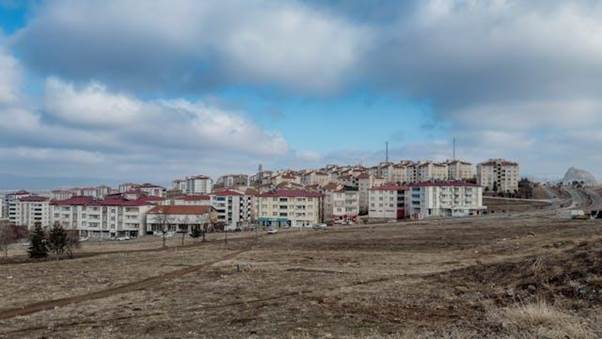The world’s population has grown at an unprecedented pace over the last century, creating a phenomenon known as Population pressure. As more people inhabit the planet, the demand for resources such as food, water, housing, and energy increases, putting immense strain on the environment and societies.
Table of Contents
While population growth can bring innovation, diversity, and economic opportunities, unchecked expansion often leads to challenges that affect sustainability, social harmony, and quality of life.

What Is Population Pressure?
Population pressure occurs when the number of people in a given area exceeds the available resources needed to maintain a healthy standard of living. This can manifest in both rural and urban contexts. In rural areas, it may mean too many people relying on limited farmland, while in cities, it could involve overcrowding, inadequate infrastructure, and competition for jobs. The term highlights the balance or imbalance between human numbers and resource availability.
Causes of Population Pressure
The rise of Population pressure is influenced by a combination of factors, both natural and human-made:
- High Birth Rates – In many developing countries, birth rates remain high due to cultural traditions, limited access to contraception, and economic reliance on large families.
- Declining Death Rates – Advances in healthcare and medicine have reduced mortality, leading to longer lifespans and growing populations.
- Migration – Movement of people into resource-scarce regions can intensify Population pressure.
- Economic Growth – Industrial and urban development often attract people to certain areas, creating overcrowding.
- Unequal Resource Distribution – Even when resources exist, poor management or inequality can make them scarce.
Population Pressure in Urban Areas
One of the most visible forms of Population pressure is urban overcrowding. Cities worldwide face rising demands for housing, sanitation, and transportation. Slums often emerge when infrastructure cannot keep pace, leading to poor living conditions, lack of clean water, and heightened disease risks. Additionally, traffic congestion, air pollution, and strained public services are direct results of urban population stress.
Impact on Agriculture and Food Security
Rural communities experience Population pressure in different ways. Limited farmland must support more people, often resulting in smaller plots per household. This overuse leads to soil degradation, reduced crop yields, and deforestation as families clear more land for cultivation. In many regions, food insecurity becomes a pressing issue, with supply struggling to match demand. This cycle not only impacts nutrition but also drives migration to cities, further intensifying urban challenges.
Environmental Consequences of Population Pressure
The environment is one of the most affected by Population pressure. Increased demand for land, water, and energy results in deforestation, water scarcity, and excessive fossil fuel consumption. Ecosystems are disrupted as habitats are destroyed to make way for agriculture or urban expansion. Additionally, pollution levels rise air pollution from vehicles, water pollution from industrial waste, and land degradation from over-farming all of which contribute to climate change and biodiversity loss.

Social and Economic Impacts
Population pressure has profound social and economic implications:
- Unemployment – When job opportunities are limited compared to the growing labor force, unemployment and underemployment increase.
- Poverty – Resource scarcity often leads to higher living costs, trapping vulnerable communities in poverty.
- Healthcare Strain – Overcrowded hospitals and insufficient medical staff struggle to serve expanding populations.
- Education Challenges – Schools become overcrowded, and the quality of education declines.
- Social Tensions – Competition for scarce resources can trigger conflicts, crime, and political instability.
Global Hotspots of Population Pressure
Certain regions face more acute Population pressure due to rapid growth and limited resources. South Asia, sub-Saharan Africa, and parts of Latin America are among the most affected. These regions often experience food insecurity, water shortages, and urban sprawl. Meanwhile, developed countries may feel pressure differently, often through aging populations and migration-driven growth. Recognizing these hotspots helps policymakers address challenges in context-specific ways.
Solutions to Managing Population Pressure
Addressing Population pressure requires a multifaceted approach:
- Family Planning Programs – Expanding access to contraception and reproductive health services can reduce birth rates.
- Education – Educating women and girls is one of the most effective ways to lower fertility rates and empower families to make informed choices.
- Sustainable Agriculture – Promoting modern farming techniques, crop diversification, and soil conservation can increase yields without degrading land.
- Urban Planning – Building resilient infrastructure, affordable housing, and efficient public transport reduces the strain of urban overcrowding.
- Resource Management – Policies that promote efficient use of water, energy, and land can help balance demand and supply.
- International Cooperation – Since Population pressure has global consequences, collaboration on climate change, migration, and food security is essential.
Role of Technology in Reducing Population Pressure
Technological advancements offer promising solutions to Population pressure. Innovations such as precision agriculture, desalination plants, renewable energy systems, and smart cities help optimize resource use. Digital platforms also improve education, healthcare, and governance, ensuring that resources are distributed more equitably. While technology alone cannot solve overpopulation issues, it is a critical tool for alleviating its impacts.
Looking Toward a Balanced Future
The challenge of Population pressure is not merely about the number of people but how resources are managed and distributed. A world with ten billion people could thrive if sustainable practices, equitable policies, and innovative technologies are embraced. Conversely, even smaller populations could suffer if waste, inequality, and environmental neglect persist. The key lies in balancing growth with responsibility, ensuring that development meets today’s needs without compromising future generations.
Conclusion
Population pressure is one of the defining issues of the 21st century, influencing everything from food security and healthcare to environmental sustainability and social stability. While the challenges are significant, solutions exist through education, sustainable development, and global cooperation. By recognizing the urgency of the issue and taking proactive steps, societies can transform Population pressure into an opportunity for innovation, resilience, and shared prosperity.